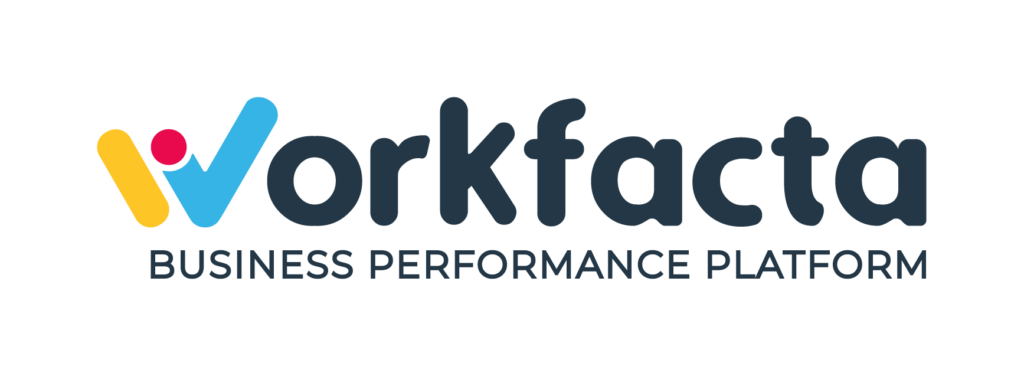
MEETINGS | PRODUCTIVITY | TEAM COLLABORATION | COMMUNICATION | REMOTE WORKING
The Different Types of Business Meetings
The Different Types of Business Meetings
 Workfacta Team
Workfacta Team
Published 24/02/22
Fifteen per cent of an organisation’s time is spent on meetings.
And as we continue to get used to remote and hybrid working arrangements, the number of different types of business meetings continues to grow, as do questions on how to get the most out of them. Below are some considerations on the different types of modern meetings.
Here are three of the most common different types of business meetings:
- Strategy meetings
- Check-in meetings
- Review meetings
. . .
Strategy meetings
Strategy meetings could also be considered planning or executive meetings and are typically much longer and more in-depth and will be dotted throughout the year, focusing on planning out a significant objective, campaign, activity or project.
These meetings involve plenty of decision making and forward-thinking, so be prepared for some strategic choices.
Check-in meetings
Although smaller in scale, check-in meetings are an essential factor in the day-to-day running of an organisation. They can typically be held weekly, fortnightly and monthly as long as they are frequent.
There is opportunity for these meetings to be collaborative in nature where leadership can invite solutions, input and problem solving from the team.
Review meetings
Reviews are a delicate process that requires more attention to detail and careful handling from management and are helpful for team members to be shown how their performance is being perceived by leadership. These are primarily considered informative meetings but can also incorporate small collaboration and strategy.
. . .
Ways of conducting meetings
Traditionally, business meetings have been conducted in-person, either in an office space or taking a client out to lunch, for example. These days, however, meetings can be conducted remotely via phone or video link to a virtual meeting room. This has made doing business by distance more achievable than ever before. And with Upwork predicting that more than 22 per cent of the US workforce will be working remotely in 2025, it’s here to stay.
Aside from the meeting format, there are differences between internal and external meetings. Meetings with clients will also slightly differ based on the project being undertaken and what stage the project is at – for instance, initial brainstorming meetings at the beginning of a new project will be more ideas-based and free-flowing than a meeting towards completion of the project, which will often be more goals-oriented and about getting tasks ticked off.
Being comfortable across all different types of meetings is essential for anyone conducting business in 2022. With a need for flexibility in meeting format as a lingering result of the COVID-19 pandemic and the rise in staff working from home or negotiating hybrid working arrangements, many business meetings will continue to be conducted virtually.
. . .
Expected outcomes of each type of meeting
The different types of business meetings will naturally come with different expected outcomes. When running internal meetings with your team, you should expect everyone involved to come away from the meeting with clarity on tasks – while the meeting itself is a chance to conduct an effective progress review.
Check-in meetings will carry the expectation of delivering clear updates on the different tasks that make up a project or someone’s job role and troubleshooting any problems that may have arisen. It is imperative to ensure you and your team are aligned on the direction and are transparent on steps moving forward.
Your meeting being conducted in-person or virtually should not affect the expected outcomes if the subjects covered have not changed.
. . .
Downfalls of different types of business meetings
The most common downfall across all of the different types of business meetings is inefficiency. One study showed that professionals wasted $541bn worth of resources by attending futile meetings.
All meetings are at risk if not organised well enough, or a clear meeting structure is not implemented.
Too many people in meetings is a common problem that often detracts from the room’s overall efficiency. While it can avoid double-handling by having everyone involved in a task in the discussion, it streamlines proceedings if those who aren’t immediately needed can catch up later. Having fewer people present cuts down on the early-meeting talkfest and saves time and money.
Additionally, arriving with an agenda that all parties are familiar with cuts wasted time dramatically and get everyone back to work faster. Follow our business meeting workflow for a more efficient, valuable meeting.
. . .
Business meeting software for all types of meetings
The Workfacta system makes lacklustre meetings efficient. It’s an all-in-one platform to suit all business meeting needs, including workflows to foster effective and productive meetings, execution plans to measure and track goals, progress reviews and a 360-degree view of business health.
It keeps the meeting on track and with a concrete workflow and systemises something that is often painful for everyone whilst keeping easy-to-understand records for everyone to access and follow.


